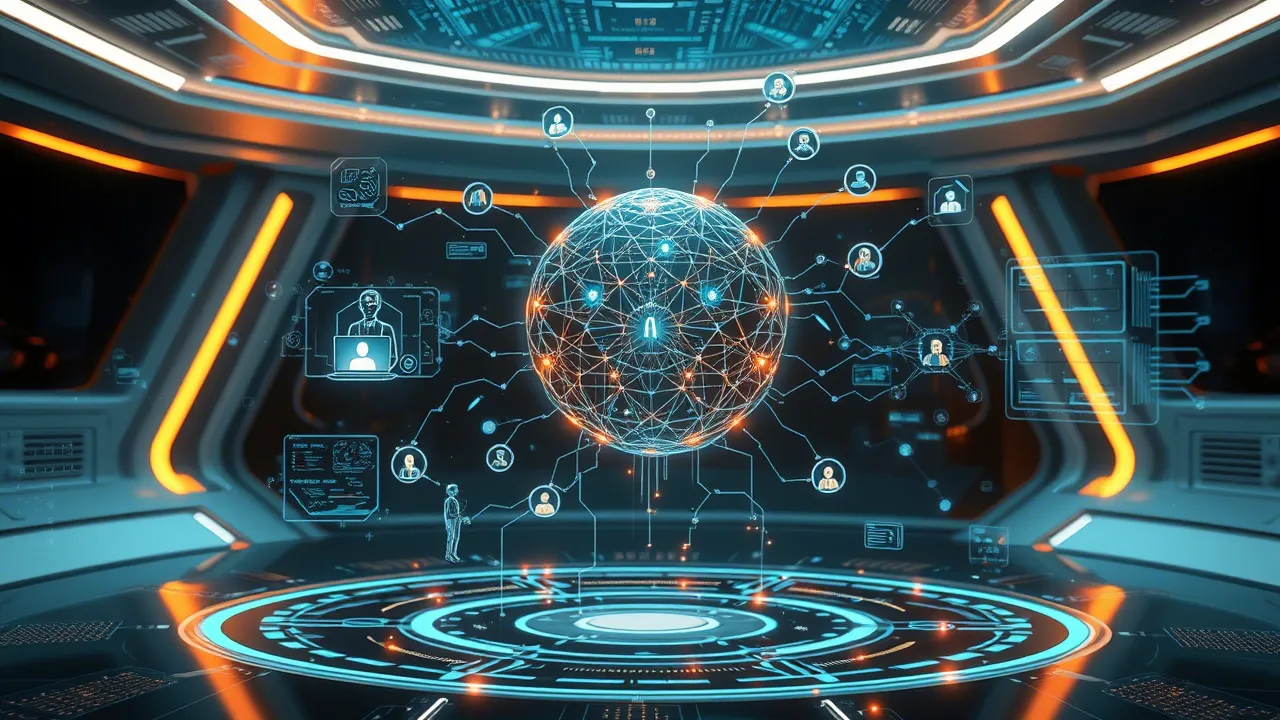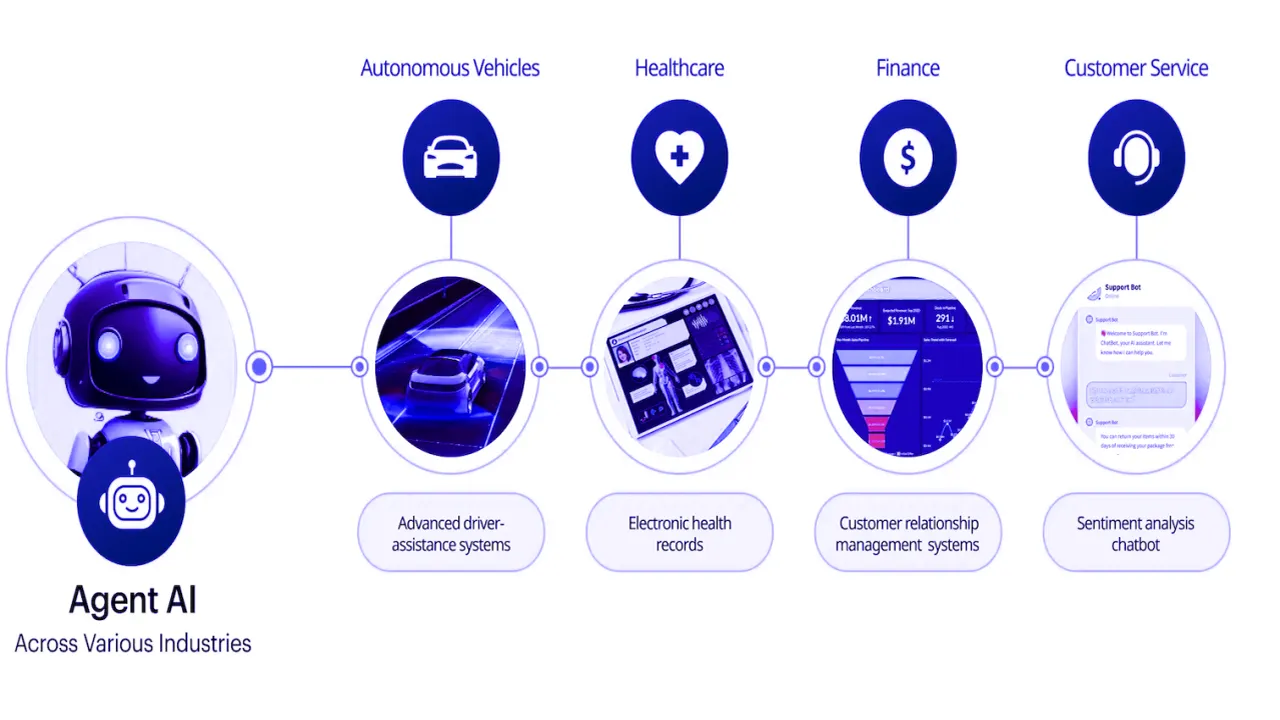The Next Revolution After ChatGPT: Meet Agentic AI
If 2023-2024 were defined by generative AI that learned to write texts and create images on demand, then 2025 marks a new, far more powerful shift: the era of Agentic AI, or autonomous AI agents. This is a fundamental transition from AI as a passive tool that responds to commands to AI as a proactive, autonomous partner capable of independently setting goals, planning, and acting to achieve them. Its no longer just an "assistant," but a digital "employee" capable of performing complex multi-step tasks without constant human supervision.
In this guide, we will break down what autonomous AI agents are, how they are changing the rules of the game in business with case studies from Siemens to JPMorgan, and how the new discipline of Agentic AI Optimisation (AAIO) can become your secret weapon in the competitive landscape.

Part 1: What is Agentic AI? From Instructions to Autonomous Actions
The key difference between Agentic AI and previous AI generations is the presence of autonomy. A standard model (like ChatGPT) receives an instruction and executes it. An AI agent receives a goal and determines for itself how to achieve it.
A typical AI agents lifecycle looks like this:
- Goal Understanding: You give the agent a high-level task. For example: "Analyze our top 5 competitors for the last quarter and prepare a summary report of their marketing activities."
- Planning: The agent decomposes this goal into sub-tasks. 1) Identify the top 5 competitors. 2) Find their official websites and social media. 3) Gather data on new products and promotions. 4) Analyze their advertising campaigns. 5) Structure the data into a report. 6) Email the report to you.
- Execution: The agent begins to execute the plan, using available tools: accessing the internet via a browser, connecting to internal databases via APIs, using other AI models to analyze text or images.
- Self-Correction: If the agent encounters a problem at any stage (e.g., a competitors website is down), it doesnt stop. It adjusts the plan: it tries to find the information from another source or reports the issue and moves to the next item.
This transforms AI from a simple calculator into a full-fledged business analyst capable of working independently.
Part 2: Real-World Cases: How Agentic AI is Already Transforming Business
Agentic AI is not a theory but an already-working technology being implemented by industry leaders.
- Industry (Siemens): In complex engineering and manufacturing, AI agents are used for autonomous optimization. An agent might be given the goal "reduce the energy consumption of this production line by 5% without losing productivity." It would then autonomously run thousands of digital simulations, change parameters in a digital twin environment, and ultimately propose the optimal equipment configuration to engineers.
- Finance (JPMorgan): The financial sector uses agents to automate compliance and market analysis. An agent can monitor news and market data 24/7, identify anomalies matching fraud patterns, and automatically generate reports for the security department. This is orders of magnitude faster and more accurate than manual analysis.
- Retail & Logistics (Walmart): For a retail giant, supply chain management is a key task. Autonomous AI agents can track sales in thousands of stores, weather conditions, traffic situations, and inventory levels in real time. Based on this data, they can make autonomous decisions: reroute a shipment from a region with low demand to one with high demand to prevent stockouts and maximize profit.
Part 3: AAIO – Agentic AI Optimisation. Your Autonomous SEO Specialist
One of the most promising areas is Agentic AI Optimisation (AAIO) – the use of AI agents for the continuous optimization of business processes and digital assets. A prime example is AAIO in SEO and GEO.
Imagine giving an AI agent this goal: "Increase organic traffic to our website from Germany (GEO) for the keyword group related to industrial automation." What would the agent do?
- It would start 24/7 monitoring of Google.de search engine results pages (SERPs).
- It would analyze the content, keywords, and backlink profiles of all competitors in the top 10.
- It would identify "content gaps" on your website – topics important to the audience but not covered by you.
- It would autonomously generate a brief for a copywriter or even write a draft of an expert article on the topic, using up-to-date data.
- It would analyze your Google Business Profile and suggest optimizations to improve local search performance (GEO).
- It would track the results and adjust the strategy in real time.
Thus, AAIO SEO is the shift from manual analysis and periodic edits to a constantly running, self-learning optimization system that operates 24/7.
Part 4: Implementing Agentic AI: Practical Steps and Challenges
Despite its immense potential, implementing autonomous agents requires a thoughtful approach.
- Where to start: Begin with well-defined, routine, but multi-step tasks. For example, "weekly collection of our product reviews from all marketplaces, clustering them by topic, and sending a report to the quality department."
- Platforms and Tools: Both open-source frameworks for creating agents (e.g., LangChain, Auto-GPT) and enterprise-grade platforms offering visual agent-scripting environments are emerging.
- Key Challenges:
- Security: Giving an AI access to live systems is a risk. Key principles include: working in a "sandbox" with limited permissions, strict API access control, and constant auditing of actions.
- Reliability & "Hallucinations": An agents mistake can lead to real-world consequences (e.g., sending the wrong order). Systems for validation, dual control, and mandatory human-in-the-loop approval for critical actions are necessary.
- Cost: An agent that constantly queries powerful models and APIs can be expensive. Cost monitoring and setting limits are essential.
Frequently Asked Questions (FAQ)
Question: How is Agentic AI fundamentally different from a regular chatbot?
Answer: A chatbot is passive—it answers a specific question within a dialogue. An Agentic AI is proactive—it receives a goal, independently builds a multi-step plan, uses various tools (browser, APIs) to execute it, and adapts to changing conditions to achieve the final objective.
Question: Is it safe to give autonomy to artificial intelligence?
Answer: It is safe when strict rules are followed. The autonomy of AI agents is always limited to a "sandbox"—an isolated environment with clearly defined permissions. Critical actions always require human confirmation (human-in-the-loop). This isnt about unchecked consciousness, but about delegating authority within set boundaries.
Question: What is AAIO and how can it help my business?
Answer: AAIO (Agentic AI Optimisation) is the use of AI agents for continuous, automatic optimization. For example, in marketing, an agent can analyze advertising campaigns 24/7, find inefficient ads, reallocate budgets to more successful ones, and test new creatives. This helps maximize ROI and react to market changes much faster than any human team.
Question: Where should a small company start with implementing AI agents?
Answer: Start by automating an internal, routine process. The ideal candidate is a task that requires an employee to open 3-4 different programs or websites, copy information from them, and compile it into a single report or email. For example, an agent to "gather data on new leads from the CRM and website, enrich it with information from LinkedIn, and prepare a summary for the sales department."
